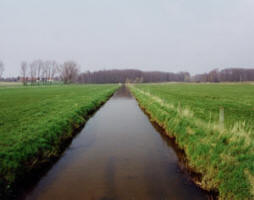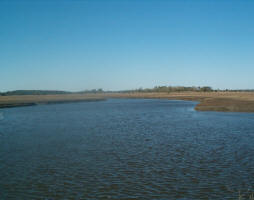- Regional water observation mechanism
- Regional Cooperation Assessment
- Water Quality Monitoring (JP)
-
Water scarcity and drought (JP)
- WG meeting, Madrid, 2010-02-17
- Water Scarcity Private Area
- WG meeting, Seville, 2007-06-19
- WG meeting, Brussels, 2006-09-26
- Water Scarcity and Drought Survey (2007)
- Phase I documents 2004-2006
- EU WG on Water Scarcity and Drought
- 20100217
- Background documents
- Desertification, Drought and water scarcity
- EC Expert group on WS&D meeting, Venice 13-14 October 2011
- Halting desertification in Europe
- Water Security
- Groundwater (JP)
- Waste water reuse (JP)
- Shared Water Resources Management (JP)
- Linking rural development and water management (JP)
- Waste management
- Water institutions
- Climate Change
- Floods
- Desalination
- Right to Water
- Irrigation
- Satellite data
- Water reports & data
- Hydrology
- Sanitation
- Gender and IWRM
- ArabWAYS
- Non-Revenue Water
- Virtual Water & Water Footprint
- WANA Water Panel
- Water Demand
- Water Governance
- Water Pricing
- Water accounts
- Water nexus Energy
- Geosciences
- Rural Management
 Model-based scenarios of Mediterranean droughts
Model-based scenarios of Mediterranean droughts
This study examines the change in current 100-year hydrological drought
frequencies in the Mediterranean in comparison to the 2070s as simulated by
the global model WaterGAP. The analysis considers socio-economic and climate
changes as indicated by the IPCC scenarios A2 and B2 and the global general
circulation model ECHAM4. Under these conditions today's 100-year drought is
estimated to occur 10 times more frequently in the future over a large part
of the Northern Mediterranean while in North Africa, today's 100-year
drought will occur less frequently. Water abstractions are shown to play a
minor role in comparison to the impact of climate change, but can intensify
the situation.
This study will, explicitly for the Mediterranean Region, examine whether
the upward trend of droughts (IPCC, 2001), as described above, is likely to
continue in the future, examining drought frequency as the main indicator.
It will investigate the impacts of global change, including climate and
socio-economic changes on future hydrological drought frequencies using two
of the IPCC global emission scenarios, A2 and B2 (IPCC, 2000). These
emission scenarios were constructed to explore future global developments of
society and environment. Scenario A2 assumes a strong, but regionally
oriented economic growth and fragmented technological change with an
emphasis on human wealth, while B2 emphasizes the protection of the
environment and social equity, but also relies on local solutions to
economic, social, and environmental sustainability. Both scenarios represent
a world in which the differences between developed and developing countries
remain strong.
It is shown that climate change has a comparably stronger impact on the
change in drought frequency than anthropogenic water uses. Water
abstractions can, however, intensify drought conditions. On the other hand,
this kind of drought analysis reaches its limits in a dry climate, as
drought frequencies cannot increase in deserts and in these areas flows are
too low to assume statistical significance of the changes.
| Creator | Advances in Geosciences/ Published by Copernicus Publications on behalf of the European Geosciences Union - Adv. Geosci., 12, 145-151, 2007 (www.adv-geosci.net/12/145/2007/) © Author(s) 2007. Authors: M. Weiß, M. Flörke, L. Menzel, and J. Alcamo, Center for Environmental Systems Research, University of Kassel, Kurt-Wolters-Str. 3, 34109 Kassel, Germany (email: weiss@cesr.de) |
|---|---|
| Publisher | Advances in Geosciences/ Published by Copernicus Publications on behalf of the European Geosciences Union - Adv. Geosci., 12, 145-151, 2007 (www.adv-geosci.net/12/145/2007/) © Author(s) 2007. Authors: M. Weiß, M. Flörke, L. Menzel, and J. Alcamo, Center for Environmental Systems Research, University of Kassel, Kurt-Wolters-Str. 3, 34109 Kassel, Germany |
| Type of document | Proceedings |
| Rights | Public |
| File link |
http://www.adv-geosci.net/12/145/2007/adgeo-12-145-2007.pdf |
| Source of information | Advances in Geosciences/ Published by Copernicus Publications on behalf of the European Geosciences Union - Adv. Geosci., 12, 145-151, 2007 (www.adv-geosci.net/12/145/2007/) © Author(s) 2007. Authors: M. Weiß, M. Flörke, L. Menzel, and J. Alcamo, Center for Environmental Systems Research, University of Kassel, Kurt-Wolters-Str. 3, 34109 Kassel, Germany |
| Keyword(s) | drought |
| Subject(s) | RISKS AND CLIMATOLOGY |
| Relation | http://www.emwis.net/topics/WaterScarcity |
| Geographical coverage | n/a |
 you are not logged in
you are not logged in





